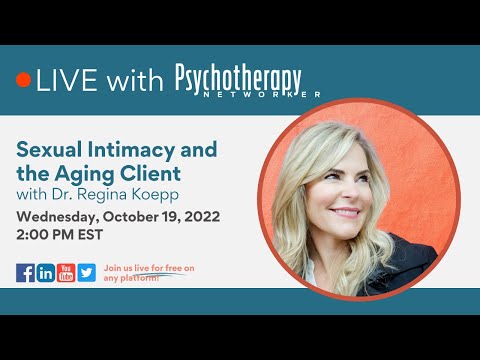Earlier this year, therapist Michele Weiner-Davis spent hours in front of a camera, her husband patiently hitting the record button as she rehearsed for what she believed could be the most important 18 minutes of her professional career: her first TED talk.
An author of seven books and a popular workshop presenter with countless media appearances behind her, including Oprah and the Today show, Weiner-Davis was convinced that giving a talk at a TEDx conference in Boulder, Colorado would make a difference in her career. “I had followed what people were doing on that stage that made them so popular, and I gained an enormous amount of respect for the venue,” she says. “Giving a TED talk became part of my professional bucket list.”
Getting up not only on the TED stage, but on its website, has become a new professional milestone for many therapists in the Digital Age. First conceived in 1984 as a live conference devoted to spreading ideas about technology and design among elite thinkers in the Silicon Valley, TED Talks exponentially increased their audience and influence beyond the tech crowd in 2006, when they began expanding the range of topics they addressed and started being uploaded online for free viewing. In 2008, they expanded to locally organized events through the TEDx program, run independently under a license from TED, with the hope of engaging an even larger audience in new ideas.
Today, speakers are drawn to TED at the prospect of increasing their impact and achieving instant celebrity. For instance, more than 12 million people have watched social work professor Brene Brown’s TEDx Houston talk on the power of vulnerability, which sent her career skyrocketing beyond the ivory tower. Brown is now a headliner at venues that range from Facebook’s Global Marketing Summit to the Gates Foundation events. Her books are bestsellers, she’s appeared on Oprah, and she’s founded The Daring Way, a training program for helping professionals who are attracted to her approach to relationship enhancement.
What accounts for the popularity of the TED phenomenon? One obvious explanation is the care and thought given to making the most of the 18 minutes on stage allotted to any TED speaker. Just go to the TED website to find a detailed manual for TEDx organizers and would-be speakers. Presenters like Weiner-Davis must submit their speech, walk through multiple edits, memorize the content verbatim, and confer with both organizers and professional speaking coaches to guarantee quality and conformity with the style of the TED main stage. Combine this intense preparation with a format emphasizing the importance of dramatic storytelling in presenting often complex ideas and you have a Hollywood-level potential to provide a vast worldwide audience with an intellectual high.
Previously delegated to the terse sound bites of morning TV, small professional conferences, or the pages of a book, therapists and other professionals who hope to spread their ideas have begun to realize that TED is a way to leap to the head of the pack. Why restrict yourself to a roomful of several hundred people when you can reach millions at once? Couples therapist Esther Perel’s 2013 Valentine’s Day talk at TED@250 in New York City on erotic intelligence has been viewed by more than five million people around the world and translated into 32 languages. She now receives mail from parts of the world where sexuality, gender, and power are taboo subjects. “TED gives you influence, currency, and credibility,” she says. “It straddles the professional as well as the general public. For me, it was the beginning of speaking for a wider audience, and because it was TED, the influence was exponential.”
Given its mushrooming growth in the past decade, however, TED has acquired its share of critics. Some complain that the format oversimplifies complex research into infotainment, reducing its ability to educate an audience and leaving little substance to inspire change. Satiric publications like The Onion have poked fun at the overly dramatic style of the presentations. One TED critic, University of San Diego professor Benjamin Bratton, actually gave a talk at TEDx San Diego on why TED talks can be harmful for society. Warns Bratton, “If we really want transformation, we have to slog through the hard stuff—history, economics, philosophy, art, ambiguities, contradictions.”
There’s no doubt that TED is a form of theater, its appeal driven largely by each speaker’s personality. But many would argue that 18 minutes of a great idea is intellectually substantial in a world where the alternative is 140 characters on Twitter. “I don’t see any cons,” says anthropologist Helen Fisher, who has given several TED talks on romantic love and the brain. “It’s a much more serious podium than walking on The Today Show, for example. This is not glitzy. I can reach millions of people without getting all dressed up in business clothes and getting on an airplane. As a public educator, for me, this is beautiful.”
Kathleen Smith
Kathleen Smith, PsyD, PLLC, focuses her practice on treating a number of clinical issues including: anxiety disorders (generalized anxiety, social anxiety, obsessive-compulsive disorder, and specific phobias), depression, ADHD, and traumatic events, including abuse and domestic violence.













